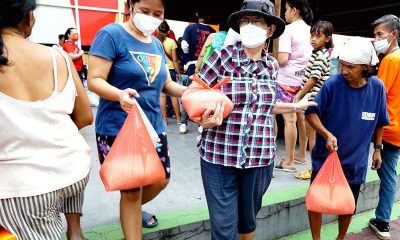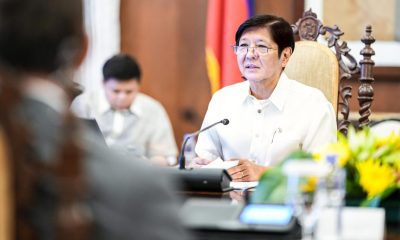Technology
COVID-19 and the future of public sector work surveillance

Work surveillance can take various forms, from light to extremely intrusive observation, from digital surveillance to more complex artificial intelligence analysis. (Pexels photo)
The COVID-19 pandemic has dramatically accelerated a trend toward remote work in many parts of the public sector. The federal government issued guidelines on March 15 urging employees to work remotely, whenever and wherever possible, and similar protocols were established around the same time across all levels of governments in Canada. The immediate and massive whole-of-government shift to remote work has introduced uncertainty with respect to the security of data, the management of teams and individual productivity and mental health.
With so many public sector employees working from home now and new guidelines from the federal Treasury Board that encourage it going forward, there are pressing demands on human resources management, in particular in the areas of manager-employee relationships, work assignments, productivity and accountability. One critical piece of this equation relates to work surveillance and the technological advancements that have made digital work surveillance in the context of remote working not only more possible but also potentially more fraught with privacy concerns. These concerns must be balanced with the legitimate objectives of public sector employers in ensuring a productive workforce on behalf of Canadians.
Work surveillance can take various forms, from light to extremely intrusive observation, from digital surveillance to more complex artificial intelligence analysis. One app gaining popularity among private sector employers in the pandemic is always-on video-conference-call software that takes pictures of employees every few minutes via a front-facing laptop webcam and posts them on a digital wall, so that managers can see people working at their desks. Software and hardware are available that can monitor activity on devices, such as telephone calls, emails, texts, keystrokes and clicks on the internet. Some tools use sensors on desks to register employees’ movement around the workspace; others use biometrics for facial recognition or to measure heart rate. Some of these technologies are already used in Canadian workplaces; others are not yet present in the Canadian public sector. If other countries are any indication, many are likely to be introduced by public sector employers in Canada soon.
Why is this important? The digital revolution has transformed traditional forms of work surveillance — your boss swinging by your office desk, or a sign-out board — into oversight that could be much more continuous, passive and all-encompassing, in a context in which so much of the work world exists in cyberspace. And when employees challenge workplace surveillance practices, according to evidence from Canada and the US, arbitrators and courts can be widely out of step with what the public expects in terms of privacy. These decision-makers tend to be much more permissive of surveillance, operating on assumptions about how much intrusion is “reasonable” that are more forgiving than prevailing public opinion.
The pandemic has forced public sector work environments to address important questions about digital work surveillance and the privacy of employees. We recently published a study of attitudes to various cutting-edge digital surveillance tools. It presented the results of two population-based surveys (one online and one by phone, with a total of 3,009 citizen participants) and another with an ongoing panel of Canadian public servants (346 participants), all conducted in March 2020.
We discovered that citizens and public servants find all of these emerging work surveillance technologies to be quite intrusive and unreasonable when targeted toward public servants, but they are more tolerant of digital surveillance than of physical surveillance practices. Surveillance practices that target the physical movement or behaviour of employees (such as cameras, sensors at desks, RFID cards) are particularly objectionable to Canadians. The concern here is likely due to the lack of a clearly defined link between this type of surveillance and employee performance. By contrast, and perhaps counter-intuitively, digital surveillance technologies (such as internet usage monitoring, keystroke logging and use of AI to read emails) were generally viewed as less intrusive or less unreasonable by our respondents, although they may generate more data for employers. With these particular tools the link to performance is clearer and may produce a desirable effect on work productivity and team behaviour. However, younger respondents find random photo capture software (from their computer camera) and internet usage monitoring more intrusive and less reasonable than do older people.
For a public service that was already going digital and will continue in that direction beyond the emergency conditions of the COVID-19 pandemic, these findings carry important messages. First, we can expect broad resistance among public servants to many of the new technologies. Canadians are on their side and do not support invasive work surveillance of public servants. Only the most modest technologies, like a voluntary wellness app, were viewed as reasonable by our respondents; the rest were rated somewhere between “somewhat” and “very” unreasonable. If employers pursue these without regard to the views of those targeted, employee satisfaction and workplace climate are at risk.
Second, younger Canadians are not more accepting of digital surveillance: in fact, they are more suspicious of some of these technologies than their older counterparts. Canada’s public service is already concerned about renewal and attracting the next generation of public sector leaders. It would be a mistake to assume that resistance to new digital surveillance technologies is primarily found among older generations and that the passage of time will make it easier to integrate these tools.
Finally, there are clear patterns of slightly higher tolerance for surveillance technologies that have a connection to enhancing productivity and curtailing shirking among co-workers (though even these are still considered “somewhat” unreasonable). Technologies that seem to be introduced to literally observe employees’ bodies are viewed very skeptically, whereas those that monitor internet and computer use are less objectionable, because they at least provide more nuanced information about the activity of an employee during working hours. Understanding surveillance anxieties among targeted employees will be key to finding a balance between employees’ privacy rights and employers’ desires to manage employees in remote or digital environments.
Employers must be very careful about work surveillance as the technological capacity advances and allows it to be conducted in a constant and sweeping manner. The ability to do it — and at relatively low cost— does not mean public sector employers should do it, or that it is the best way to promote high performance among employees. Certainly the world of work is changing dramatically, but managers must behave responsibly as we all adapt.
This article is part of the The Coronavirus Pandemic: Canada’s Response special feature.
This article first appeared on Policy Options and is republished here under a Creative Commons license.





















